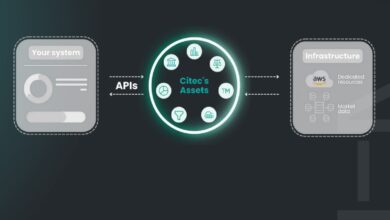
Designing and executing a cloud strategy has become a priority for companies. But if in the past flexibility and cost savings made the public cloud the winning option for most organizations, today many have discovered that a mixed approach, in which the advantages of the public cloud are combined with continuing to maintain workloads in the CPD itself, it can be more interesting.
In this sense, thanks to a hybrid cloud approach, while the unpredictable usage applications better suited to the public cloud because of the flexibility its technology resources offer, more predictable workloads, such as backups, can often be run on-premises at a lower cost than on-premises. public cloud.
By combining one or more public and private cloud environments, business organizations benefit from the advantages provided by the two types of cloud infrastructure. For this, they usually have a set of IT resources that allow them to manage and automate the different processes, while they have APIs that make it easier for them to transfer resources and workloads from one cloud to another, which makes it easier to optimize costs and ensure the most critical loads. Among the advantages of this approach, we could highlight the following:
- Greater control, since the organization can maintain critical workloads under private infrastructure.
- Flexibility, both due to the scalable nature of the hybrid cloud and the resources that the public cloud can provide.
- Cost optimization, you only pay for the resources that are used and when they are needed.
- Simplicity, since it is not a complete transition to the public cloud and a gradual and controlled migration can be carried out, in the stages that are necessary.
In return, companies that opt for this approach have to pay special attention to compatibility between the different clouds that are part of the infrastructure, as well as their connectivity. In this hybrid cloud approach, it is increasingly important to have a good backup and disaster recovery policy, so that companies can guarantee their business continuity processes. In the case of Synology, there are several options that it offers to companies in this field and that are combined.
Store locally: Synology Active Backup for Business
Synology Active Backup for Business is a solution that allows businesses to manage all their backup of VMware virtual machines, Hyper-V, Windows devices, and file server from a central console on Synology NAS.
Recovery options help keep essential services running in the face of a disaster, with instant restore options for Windows devices, virtual machines, and individual files. On the other hand, Active Backup for Business’s global deduplication technology can help reduce total backup data by more than 50%, whether on a PC, physical server, or virtual machine.
Store in the cloud: Synology C2 Backup
Synology C2 Backup is Synology’s cloud-based backup solution. C2 Backup allows you to back up your entire device, including files, applications, and system settings, in a single step.
Having been developed to respond to the particularities of the cloud and works transparently with platforms such as Microsoft 365 and Google Workspace. When it comes to data recovery, C2 Backup offers a variety of recovery options, including downloading specific files or folders from the C2 Backup Recovery Portal or restoring the entire device using the Recovery Wizard. C2 Backup.
At the same time, the solution enables a backup of the company’s presence in the main Microsoft or Google cloud services, which means securing e-mail, contacts, agenda and the files stored in these services, in a single He passed.
The solution has been designed with the highest security and privacy standards in mind, so that data is encrypted locally during the storage operation. To this is added an end-to-end encryption process, while the company ensures that the data is stored in data centers located within the EU.
Offsite Backup: Hyper Backup and Snapshot Replication
In some cases, companies may also find it interesting to back up their NAS to other external locations, such as a local shared folder, external devices, rsync servers, public cloud services, or to other Synology NAS.
In this case, the company offers its Hyper Backup solution, which allows you to back up folders, system settings, and software packages from Synology NAS to a wide range of destinations, while saving space with data compression and deduplication. data. Each backup is protected by AES-256 client-side encryption and additionally they can also host data in Germany or the United States.
On the other hand, Snapshot Replication leverages the modern Btrfs file system to create point-in-time copies of shared folders and LUNs that can be replicated to other Synology NAS and quickly restored in case of data loss or accidental modifications to the original data. In this way, organizations achieve almost instantaneous data protection and guarantee the continuity of their business.


